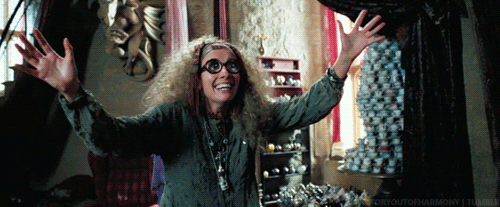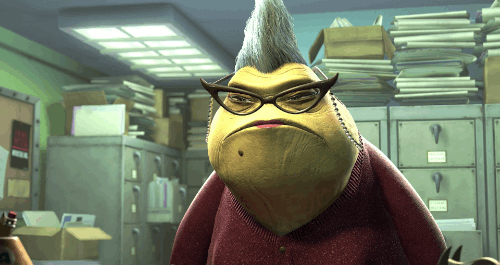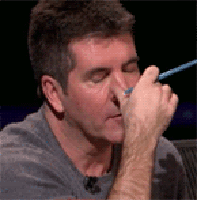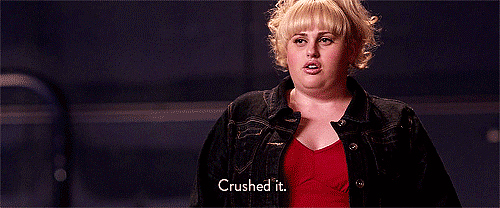Text
Discovery Learning
I like the idea of discovery/inquiry based learning. It’s fun! After a semester in a classroom that did this, I have a pretty good idea on how to implement this into my own classroom.
Not every child is going to learn the same and if we give them an opportunity to figure things out on their own, they’ll definitely benefit from it. They won’t be bored, they’ll be engaged and actively learning so that means less time for them to act out or misbehave in the classroom. And if they’re not acting out, then I wouldn’t have to make them flip a color card or use any other type of behavior management strategies, which means for a happy and fun classroom.
0 notes
Link
This is just a link to our blog for Biology that notes some of our process.
0 notes
Text
Four Phase Learning Cycle And Biology
Introduction: a question, challenge, or interesting event that captures the students’ curiosity.
Exploration: the opportunity for students to manipulate materials, to explore, and to gather information.
Concept Development: With a common experience to relate to, terminology is introduced and concepts developed in class discussion.
Application: This could take the form of an enrichment activity, an opportunity to apply what has been learned, or a test to assess learning.
I actually was in a discovery based learning classroom this semester! It’s Biology 104 and it was an ‘inquiry based learning’ environment and the class was broken into different groups at the beginning of the semester and we came up with our own projects based on Aquaponics. I was in the Microbe group and for the first part of the semester we made pickles, Lactofermented pickles. It was a bit of trial and error with the first batch because we didn’t quite know what we were doing but we eventually go it, the second batch was a lot better than the first, we could’ve still made changes to them to make them better. It’s all about the taste preference of the person.
The second half of the semester, we tried to get a large scale Aquaponics system running in the greenhouse in Crawford. There were some problems with aeration so it didn’t really work out.

0 notes
Text
It’s More Than The Activity
“Discovery learning channels the natural inquisitiveness of children (and the natural inquisitiveness that remains in adults) by providing structure to the experience without imposing unnecessary structure on the thinking. That is, unlike the science experiments that you did in high school that were “wrong” if they didn’t come out the way the book said they should, discovery learning encourages children to engage in the activity and document what does happen (Ebert II et. all).
Though the activities will be structured in the same way, your students are completely different people and so they’ll experience the activities in completely different ways. And because of that, the structure has to go beyond the discovery part of the learning. This way the experience is clarified by the concept you’re trying to teach the students.

0 notes
Text
Let Them Discover...With Your Help
allow students to find the information for themselves by some activity you came up with. After the activity the students will have a common experience that you can develop because it relates to the concept you’re teaching. The idea is to have children discover what you want them to discover. Yes, it’s new, but that’s the point.
0 notes
Text
Instruction: Discovery Learning!
“Discovery learning is an approach to instruction that focuses on students’ personal experiences as the foundation for conceptual development” (Ebert II et all).
“It is unlikely that children will walk into your classroom with all of the necessary experiences that relate to the concepts you want to teach, so the challenge is to provide your students with the opportunities for experiences they need in the context of discovery”.
We have these grades (first, second, third etc.) for a reason. For the most part, the students are where they need to be. A first grader usually doesn’t go in to first grade with a third grade knowledge level. Some students are advanced, which is amazing, but that’s not everyone. Because the students don’t have all the experience they need to relate to every single concept, we have to provide those experiences for them!
0 notes
Text
STOP
BEFORE IT BECOMES A PROBLEM!
As a future teacher, I want to make sure that I can teach my students with as few problems as possible. The best way to do that is to prevent the learners from causing problems in the first place (Bates, p. 154). You know, you can have a problem and deal with the outcomes of that problem, but it’s better if you can see a potential problem and take care of it before it even becomes a problem. Like a reverse snowball effect (? sure, let’s go with that).
I’ll have to always observe my class (I hope that the eyes in the back of my head have better vision than the ones in front) and find triggers for problems and redirect the students to something that is less triggering.
Boredom is such a big problem in classrooms, and I’m going to have to do something about it because if they are fully engaged in the lessons and actively learning, they won’t even feel the need to misbehave. Definitely get hands on work and projects (kids love that).
But what’s the big picture? Are they bored? Do they want attention, want to start trouble? These are all things to take into account. No matter the cause of their undesired behavior, they’ll still need to face the consequences of their actions, say by switching their colored card from green to orange (I like the color card charts. It lets the student and the teacher know where he/she stands and is something that I’ll have in my classroom). I also like the idea of giving the students responsibility in the classroom. We talked about it in class, I believe, if we let them do simple tasks such as picking an activity to do or changing the date on the board (or wherever it is) they’ll be less inclined to act out because they wouldn’t want their task to get taken away from them.

0 notes
Text
Rules
“The rights and needs of teachers and learners are best met when both teacher and learner clearly communicate their expectations to each other” (Bates, 2016, p. 152). There has to be classroom rules and expectations posted somewhere in the classroom where both the students and teacher can see, this way everyone knows what’s expected and so there’s no confusion.
Though I despise classrooms where the desks are all facing the front of the room, or they’re in groups of four (still facing the front), I have to accept that that’s how most classrooms are (it’s an incredibly dull and uniform way to have classrooms but, such is life). So, until I can come up with a fun way to set up my classroom, that’s how it’s going to be (unfortunately) and I’ll post the classroom rules at the front where everyone can see them.
I wish that there wasn’t a need for rules, that everyone just knew what to do, but there is. We need to remind the students, especially the younger ones, how they’re supposed to act in a classroom, and as a decent human being, because if you look at a lot of classroom rules, they’re similar;
Be kind, be respectful, follow directions, keep hands and feet to yourself, listen to others, be positive and so on.
These rules are good for the students to have because they’re an important aspect of a classroom. Classroom rules not only teach students what their actions mean but also the consequences to their actions. It also teaches discipline and order within the the classroom itself.

0 notes
Text
As Far As Corrections Go
The class did a study on behavior management and we looked at how many times a teacher corrected the student and how many times they praised the student. And the fact that we found the teachers corrected their students more than they praised their students really shocked me. I would’ve figured that the teachers would praise their students more than they corrected them, I mean, we don’t want to tear them down. At the very least they could have worded their corrections in a way that seemed to the students like praise. Corrections seem to take more of a negative connotation instead of a positive one and I feel like what we need to do is call the students out for what they’ve done, instead of what they didn’t do.
We’ve talked about it before in class, look for the positives, even if you don’t care too much about a particular student...there’s the 4:1 ratio, for every one negative thing, find four positive things about that student. Look at them in a different light. If we only used corrections and negativity then that’s not doing any good, we could seriously damage a student by only pointing out their flaws.

0 notes
Link
0 notes
Text
Of Course...
It’s impossible to know every single detail that goes on in your classroom, there’s just too much going on at one time. But you have to inform the class that even if you aren’t seeing every detail you still are watching...

0 notes
Text
Classroom Management!
...is the process of ensuring that classroom lessons run smoothly despite disruptive behavior by students. The term also implies the prevention of disruptive behavior.
It’s such a broad topic and one of the key parts of classroom management is behavior management. It has to have some sort of importance because if there isn’t a system to your classroom dealing with behavior, then it could get crazy (which isn’t something we want)!

0 notes
